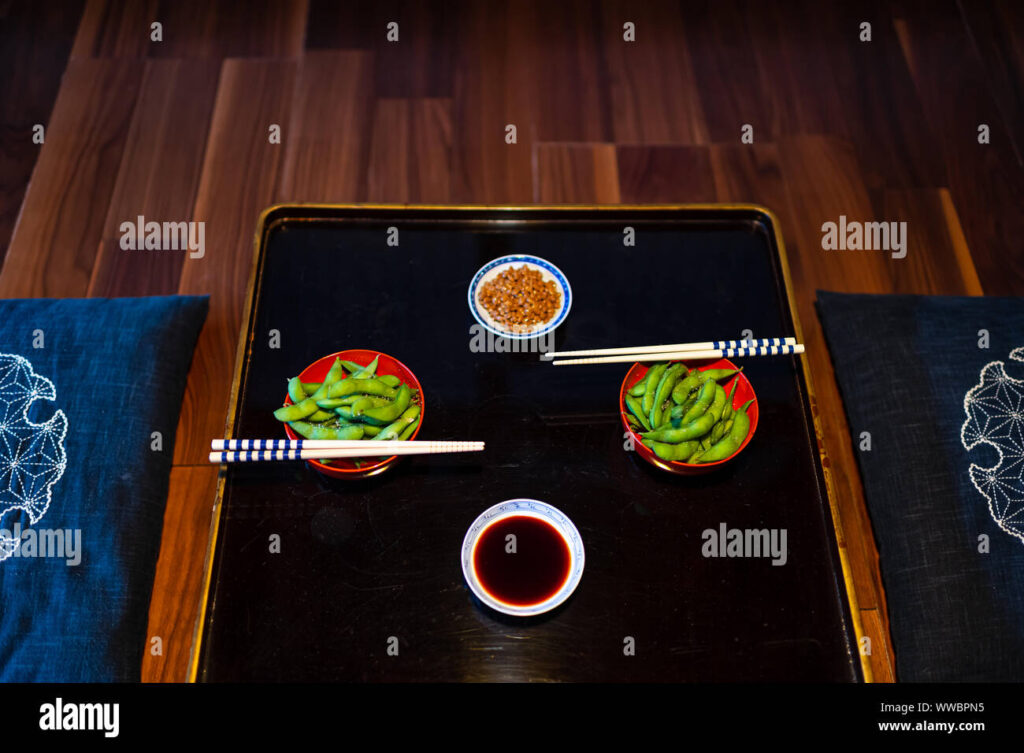Edamame, those vibrant green soybeans in their pods, are a staple snack in Japanese cuisine and are now enjoyed worldwide. This simple yet satisfying appetizer is not only delicious but also packed with nutrients. Our easy-to-follow recipe will guide you through preparing perfectly boiled and salted edamame every time. Whether you’re a seasoned cook or a kitchen novice, this guide will have you enjoying this healthy and flavorful snack in minutes. Let’s unlock the secrets to creating this perfect traditional Japanese Edamame Boiled Salted.

Imagine yourself in a bustling Japanese izakaya (a type of informal Japanese bar), the air filled with the aroma of grilled skewers and the lively chatter of patrons. Among the many delectable offerings, a bowl of bright green edamame sits invitingly on the table, lightly sprinkled with salt. This humble dish, seemingly simple in its preparation, holds a depth of flavor and satisfaction that makes it a beloved appetizer.
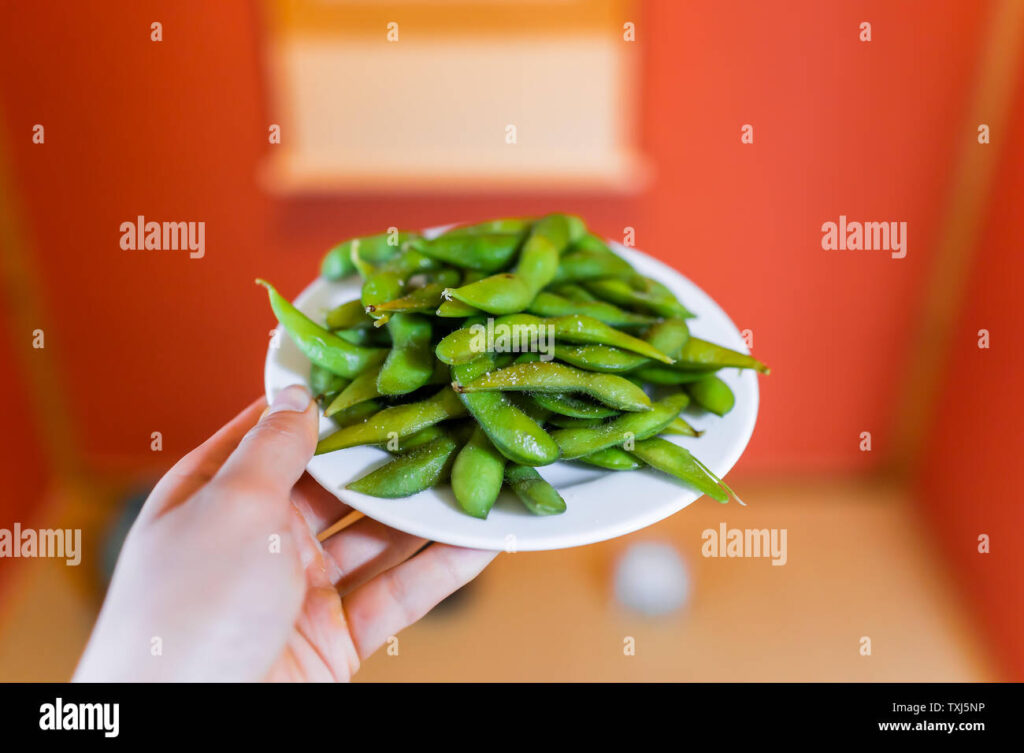
Edamame, literally translated as “stem beans,” refers to young soybeans harvested while still green and tender. They are a nutritional powerhouse, boasting high levels of protein, fiber, and various vitamins and minerals. Enjoying edamame is not just a culinary pleasure; it’s a healthy choice that nourishes your body from the inside out. And, let’s face it, the popping and squeezing action required to extract the beans from their pods adds a playful element to the snacking experience!
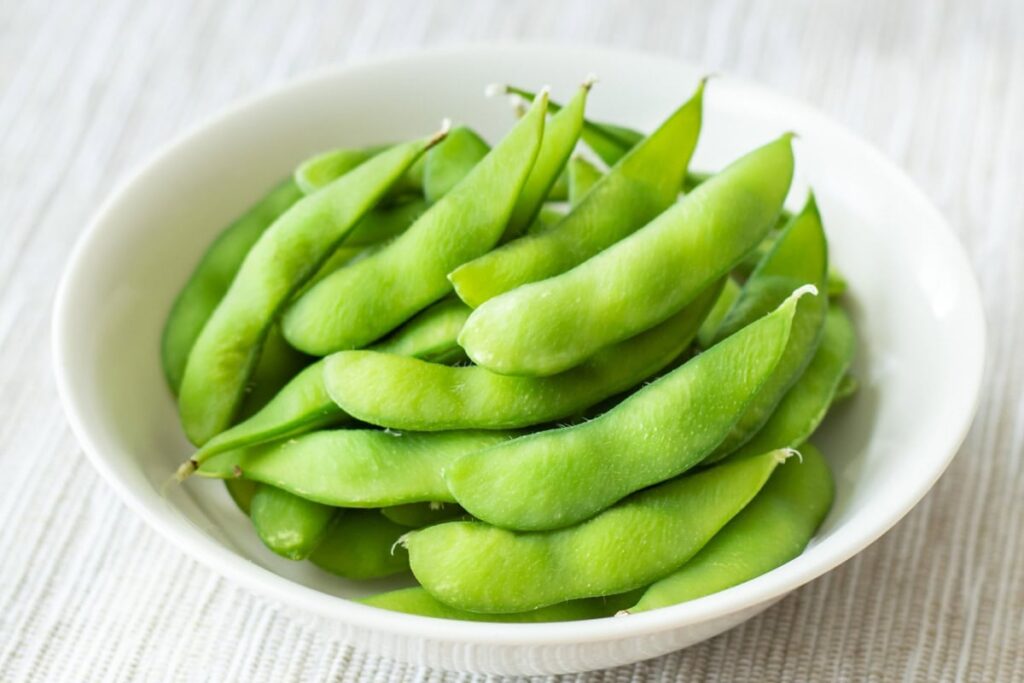
This recipe focuses on the traditional Japanese method of preparing edamame: boiling them in salted water. This simple process enhances the natural sweetness of the soybeans and brings out their delicate flavor. The salt not only seasons the beans but also helps to preserve their vibrant green color. The key to perfectly boiled edamame lies in achieving the right balance of cooking time and saltiness, which we will guide you through step-by-step.


Recipe Overview
| Category | Value |
|---|---|
| Preparation Time | 5 minutes |
| Cooking Time | 5-7 minutes |
| Servings | 4 servings |
| Difficulty | Easy |
Nutrition per serving (approximate)
| Nutrient | Amount |
|---|---|
| Calories | 120 |
| Protein | 11 grams |
| Fat | 5 grams |
| Carbohydrates | 9 grams |
| Fiber | 5 grams |
Ingredients
| Ingredient | Quantity |
|---|---|
| Fresh or Frozen Edamame in Pods | 1 pound (450g) |
| Water | 6 cups (1.4 liters) |
| Salt (for boiling) | 2 tablespoons |
| Sea Salt or Flake Salt (for serving) | To taste |
Cooking Instructions
- Prepare the Edamame: Rinse the edamame pods thoroughly under cold running water. This removes any dirt or debris. If using frozen edamame, there’s no need to thaw them before boiling. You can cook them directly from frozen.
- Boil the Water: Fill a large pot with 6 cups of water. Add 2 tablespoons of salt to the water. The salt is crucial for seasoning the edamame from the inside out and enhancing its flavor. Bring the water to a rolling boil over high heat. Make sure the pot is large enough to hold all the edamame and water without overflowing.
- Cook the Edamame: Once the water is boiling vigorously, carefully add the edamame pods to the pot. Ensure that the edamame is fully submerged in the water. If necessary, you can use a spoon or spatula to gently push them down.
- Boil the Edamame: Let the edamame cook for 5-7 minutes, or until they are tender but still slightly firm. Start checking for doneness after 5 minutes. To test, remove a pod from the pot and squeeze out a bean. Taste the bean to ensure it is cooked to your liking. The cooking time may vary slightly depending on the freshness and size of the edamame. For frozen edamame, you may need to add an extra minute or two of cooking time.
- Drain the Edamame: Once the edamame is cooked to your desired tenderness, immediately drain them in a colander. This stops the cooking process and prevents them from becoming overcooked and mushy.
- Salt the Edamame: While the edamame is still warm, generously sprinkle them with sea salt or flake salt. The amount of salt you use will depend on your personal preference. Start with a light sprinkling and add more to taste. Toss the edamame in the colander to ensure that they are evenly coated with salt.
- Serve Immediately: Serve the edamame warm or at room temperature. They are best enjoyed immediately after cooking. Provide a small bowl or plate for discarding the empty pods.
Serving Suggestions
Boiled and salted edamame is a versatile snack that can be enjoyed in various ways. Here are a few serving suggestions to elevate your edamame experience:
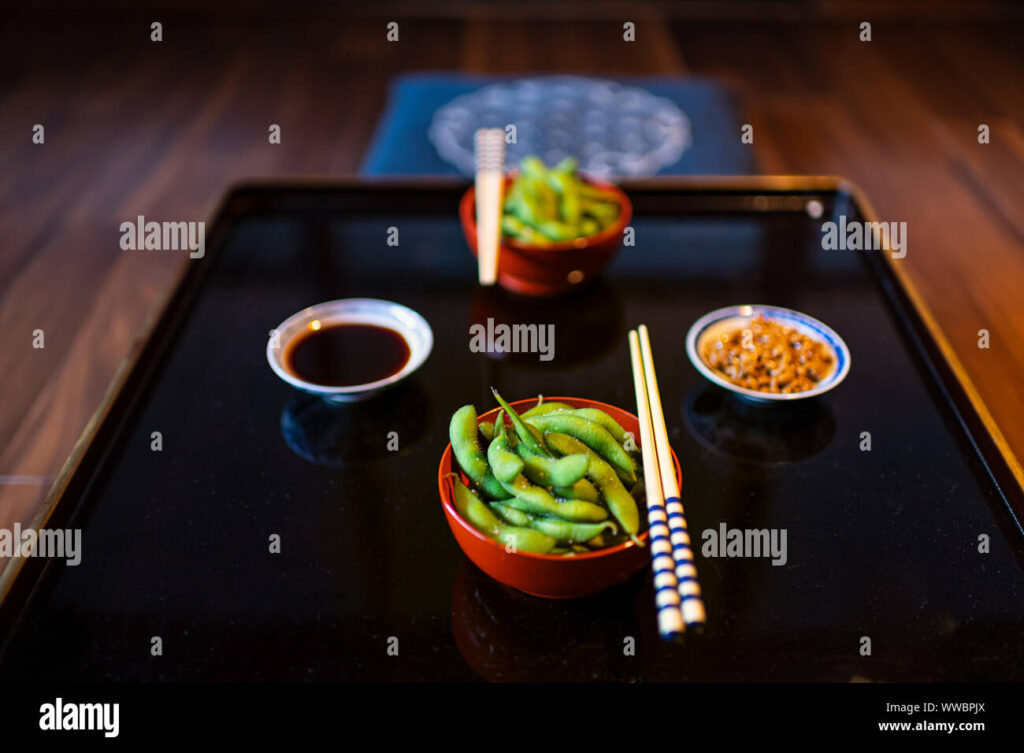
- As an Appetizer: Serve edamame as a simple and healthy appetizer before a meal. Its savory and slightly sweet flavor will awaken your palate and prepare you for the courses to come.
- With Japanese Beer: Pair edamame with a cold Japanese beer, such as Asahi or Sapporo, for an authentic izakaya experience. The saltiness of the edamame complements the crispness of the beer perfectly.
- As a Side Dish: Serve edamame as a side dish alongside sushi, sashimi, or other Japanese dishes. Its vibrant green color and nutritional value make it a welcome addition to any meal.
- With a Dipping Sauce: Experiment with different dipping sauces to add extra flavor to your edamame. Some popular choices include soy sauce, sesame oil, chili garlic sauce, or a combination of these.
- In Salads: Add shelled edamame to salads for a boost of protein and fiber. They pair well with a variety of vegetables, grains, and dressings.
- As a Topping: Use shelled edamame as a topping for rice bowls, noodle dishes, or soups. They add a pop of color, texture, and flavor to any dish.
Enjoying edamame is not just about the taste; it’s also about the experience. The act of popping the beans from their pods and savoring their flavor is a mindful and enjoyable activity. Share this experience with friends and family, and create lasting memories around this simple yet satisfying dish. Traditional Japanese Edamame Boiled Salted is a simple yet satisfying dish.
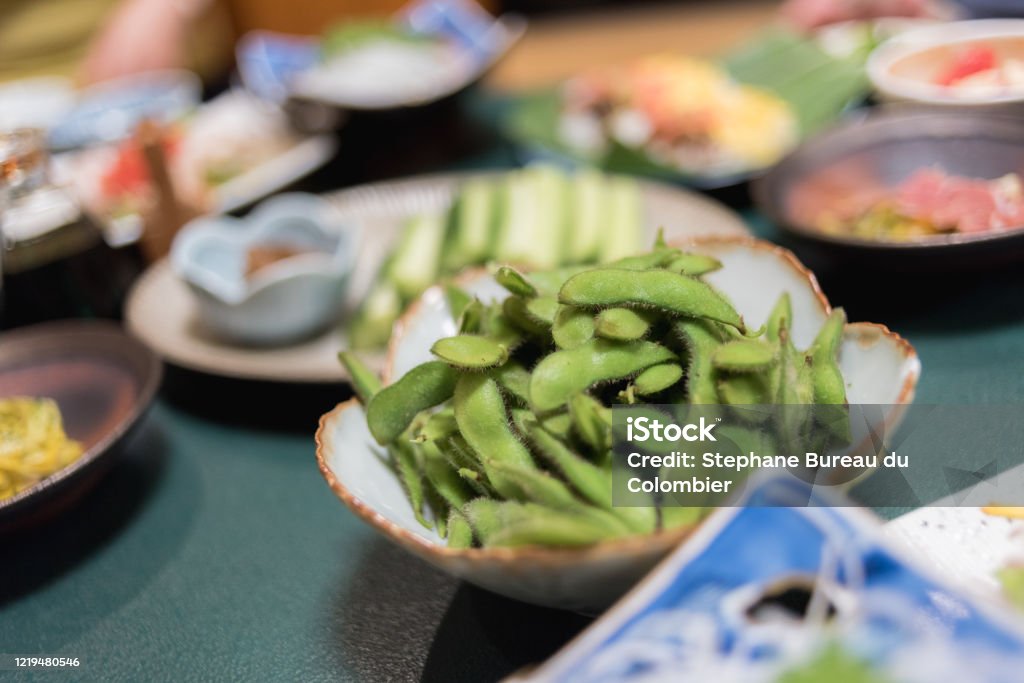
Beyond its delicious taste and playful eating experience, edamame offers a wealth of health benefits. It is an excellent source of plant-based protein, making it a valuable addition to vegetarian and vegan diets. Protein is essential for building and repairing tissues, supporting immune function, and providing energy. Edamame is also rich in fiber, which aids digestion, promotes satiety, and helps regulate blood sugar levels.

Furthermore, edamame is packed with essential vitamins and minerals, including folate, manganese, and vitamin K. Folate is crucial for cell growth and development, particularly during pregnancy. Manganese is involved in bone formation, wound healing, and metabolism. Vitamin K plays a vital role in blood clotting and bone health.

In addition to these nutrients, edamame contains antioxidants, which protect your cells from damage caused by free radicals. Antioxidants have been linked to a reduced risk of chronic diseases, such as heart disease, cancer, and Alzheimer’s disease.
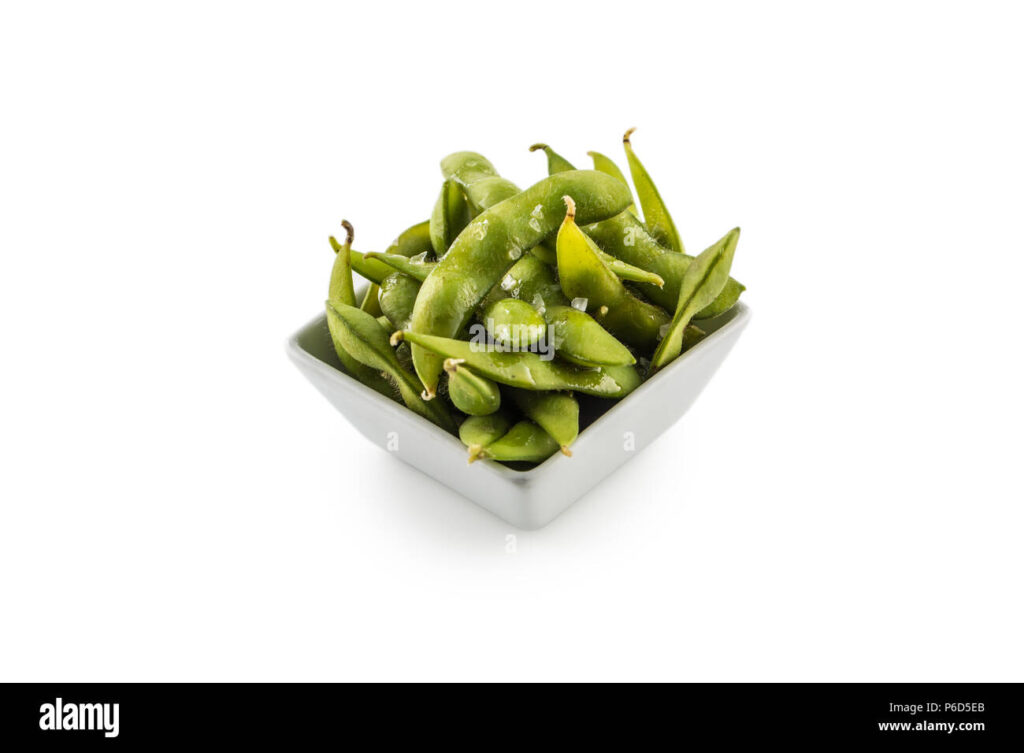
Incorporating edamame into your diet is a simple and delicious way to boost your overall health and well-being. Whether you enjoy it as a snack, appetizer, or side dish, edamame is a nutritional powerhouse that offers a wide range of health benefits.
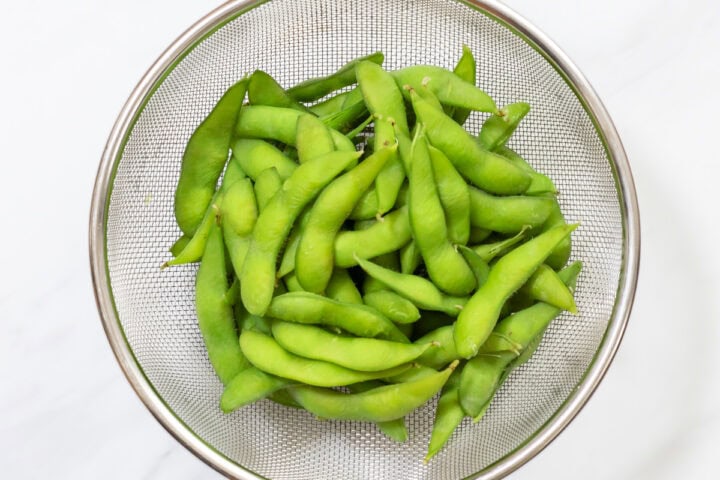
The beauty of this recipe lies in its simplicity. With just a few ingredients and a few minutes of cooking time, you can create a healthy and flavorful snack that is sure to please. Don’t be afraid to experiment with different types of salt or dipping sauces to customize the flavor to your liking. And most importantly, have fun and enjoy the process! Making Traditional Japanese Edamame Boiled Salted is an exciting process. Remember to control the boiling water, so it doesn’t overflow.
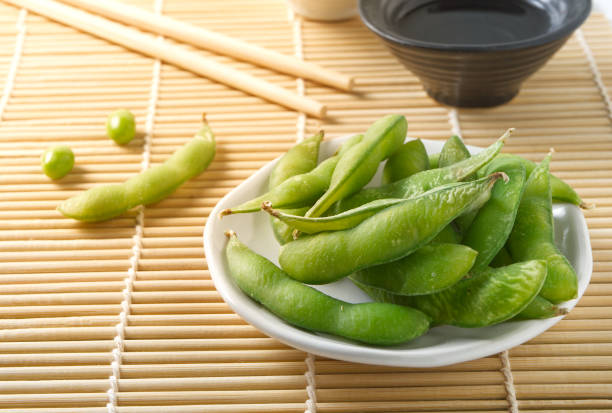
Tips and Notes
- Use High-Quality Edamame: Whether you choose fresh or frozen edamame, make sure to select high-quality pods that are bright green and free from blemishes. Avoid pods that are yellowed, wilted, or have signs of damage.
- Don’t Overcook: Overcooked edamame will become mushy and lose its flavor. Keep a close eye on the cooking time and test for doneness after 5 minutes.
- Salt Generously: Salt is essential for enhancing the flavor of edamame. Don’t be afraid to use a generous amount of salt when boiling and serving.
- Experiment with Flavors: While salt is the traditional seasoning for edamame, feel free to experiment with other flavors, such as chili flakes, garlic powder, or sesame oil.
- Store Leftovers Properly: If you have any leftover edamame, store it in an airtight container in the refrigerator for up to 3 days. Reheat gently before serving.
- Double Salt: Consider salting the water well and then, after draining, sprinkling with more salt for maximum flavor.
- Variations: Try grilling or pan-frying the edamame after boiling for a smoky, charred flavor.
So, gather your ingredients, put on your apron, and get ready to embark on a culinary adventure with edamame! This simple recipe will transform you into an edamame aficionado in no time. Embrace the simplicity, savor the flavor, and share the joy of this classic Japanese snack with those you love. Happy cooking!

Now that you know how to make perfectly boiled and salted edamame, you can enjoy this healthy and delicious snack anytime you want. It’s a great option for movie nights, picnics, or even a quick and easy weeknight snack. Plus, it’s a fun and interactive food to share with friends and family. So go ahead, grab a bag of edamame and get cooking! You’ll be amazed at how easy it is to create this authentic Japanese treat.
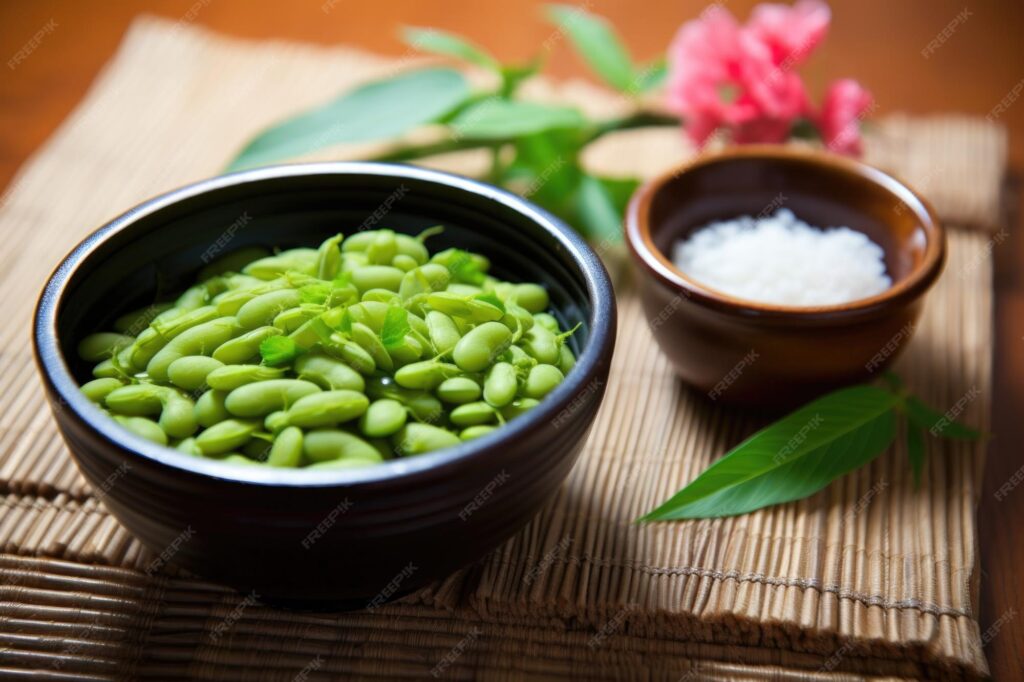
In conclusion, mastering the art of preparing perfectly boiled and salted edamame opens a gateway to the vibrant world of Japanese cuisine. This simple yet satisfying dish embodies the essence of Japanese culinary philosophy: utilizing fresh, high-quality ingredients and employing simple techniques to create flavorful and nutritious meals. Whether you’re a seasoned cook or a novice in the kitchen, this recipe provides a straightforward and accessible way to enjoy this beloved Japanese snack. From its delightful flavor and playful eating experience to its wealth of health benefits, edamame offers a culinary adventure that is both enjoyable and rewarding. Embrace the simplicity, savor the flavor, and share the joy of this classic Japanese treat with those you love. Remember, Traditional Japanese Edamame Boiled Salted is always a welcome appetizer.
